The Best High Fiber Diet Plan
that can help you Relieve
Constipation
What is the first thing that you need to include in your high fiber diet plan? Well, it may not surprise
you to know that the best thing you can do to speed up your intestinal transit is to include foods rich in
fiber, and particularly effective in relieving constipation are cereal bran such as oat, rice or
wheat.
Bran - The Best High Fiber Food
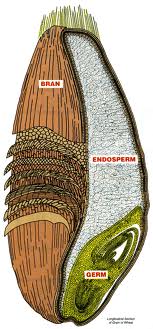
Bran is the outer layer of the kernel which is often discarded when processing the grains. It has no
nutrients as such but is primarily fiber.
It's true that strictly speaking fiber is not a food, because it doesn't get broken down by the digestive juices and is not absorbed through the digestive system, but it's absolutely essential to health.
Why is that? Simply put, nothing matches bran's stool-bulking capabilities.
When fiber absorbs water, stools gradually swell, getting bigger and wetter, and this is good because larger stools are moved out of the intestine much more quickly than smaller and drier ones and with less straining.
A little daily bran could restore normal bowel movements in 60% of those who suffer from common constipation, says British authority Nicholas W. Read, M.D., director of the Centre for Human Nutrition at the University of Sheffield.
There's no doubt that much constipation comes from a deficiency in high fiber foods.
Dr. Denis Burkitt notes that our ancestors ate about a pound and a quarter (about 600 g.) of whole grain, high fiber bread a day. We only eat 1/5 of that - a mere quarter of a pound (about 120 g.) and most of it made from highly refined white flour that has had all its fiber removed.
Natural laxatives like bran bulk-up the stool instead of simply stimulating the bowel nerves as many over-the-counter drugs do, hence are much safer and gentler and can be easily included in the High Fiber Diet Plan.
"Bran is the safest, cheapest and most physiological method of treating and preventing constipation" agrees Dr. Grant Thompson, M.D., gastroenterologist at the University of Ottawa, and author of the book Gut Reaction.
How much fiber should we aim to include in our High Fiber Diet
Plan?
On average we only get about 11 grams of fiber a day, a lot less than the Daily Value (DV) of 25 grams and even that seems quite conservative to many researchers.
"If... the average intake of dietary fiber was 40 grams per day instead of less than 20 grams, much of the problem of constipation would be eradicated"
Alison M. Stephen, M.D., University of Saskatchewan
So what can we do?
For a start you can try to include
wheat-bran cereals in your High Fiber Diet Plan, beginning
with 1/3 to 1/2 cup a day, adding more as needed, say authorities - Read more about Whole Grain Cereals
- Choose heavy, whole-grain breads. Look for the words "whole wheat" as the first ingredient on bread
labels.
- Bake your own bread using whole-grain flour.
- Add raw unprocessed wheat bran to your favorite cereals or other foods. Add it to a recipe when breadcrumbs are required, or when you're baking muffins and cookies. It's very easy to find it in any supermarket these days.
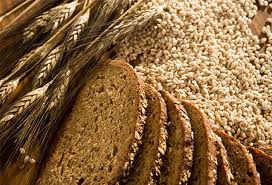
Classic British studies indicate that eating about 1 1/2 oz. (about 42 g.) of miller's bran a day doubles the weight of the stool.
What makes this bran so powerful is its raw, coarsely ground particles.
Cereals like All-Bran have been processed, which slightly lessens their lassative powers, meaning that you have to eat somewhat more to have an effect.
"If the bran is not chewy, it probably won't work" says Dr. Read.
Research shows that bran's rough-edged particles mechanically stimulate the nerves of the bowel lining, promoting colonic movement.
The bowel's nerve endings are so exquisitely sensitive that merely touching them with a soft brush induces muscular contractions and secretion, according to Dr. Read.
So, coarse, raw bran flakes have double-laxative activity - by increasing stool bulk and stimulating the
colon wall.
To buy organic wheat bran on line go to Goodness Direct.
Read about the Best Fiber Supplement
What If You Are Intolerant to Wheat?
Not everyone likes wheat bran or, indeed can tolerate it, so is there an alternative for your High Fiber Diet Plan?
Indeed there is. Dr. Read found rice bran surprisingly superior even to wheat bran as a laxative.
He had eight healthy young men eat either 15 g. of fiber in wheat bran or powdered rice bran or no supplement for ten-days periods.
Both brans boosted stool frequency and output of feces, but rice bran was clearly superior.
Rice-bran eaters had about 25% more bowel movements. All had greater stool output. Both wheat and rice bran reduced intestinal transit time equally well. Neither produced any change in intestinal gas, stool consistency or ease of defecation.
Dr. Read speculates that the high starch in rice bran may spur colon bacteria to greater activity, increasing stool bulk.
He also says that oat bran has some laxative properties.
To buy either rice bran or oat bran, or both, on line go to Goodness Direct.
How Much Bran Is Enough?
First start with a heaped tablespoon of miller's bran a day. You can sprinkle it on cereals or other foods at each meal.
However, there's no single right "dose" of bran for everyone.
Most people need a tablespoon a day to pass soft stool without straining, but others need less and some need several tablespoons.
To find out what is the right amount for your particular case, test it on yourself, wait to see what happens and then raise or lower the dose as needed.
Some Words Of Caution
When you start including more high fiber foods in your High Fiber Diet Plan, you can experience some discomfort - bloating, cramping and gas initially, says John Hopkins professor Marvin Schuster, M.D., although the distress usually disappears in two or three weeks. So don't conclude too quickly that bran is not for you.
Add fiber slowly, increasing it as needed and cutting back if your discomfort level is high. After all, a lifetime of not getting enough fiber can't be fixed in a week.
Also...
You can get into trouble if you suddenly dump too much fiber into your system all at once and especially if you don't drink enough fluids to soak up this fiber, keeping the bowel contents soft and easy to move.
Drinking too little fluid is a classic cause of hard stools and is even more so if you eat a high-fiber diet.
- An overdose of fiber can be a sudden shock to the system, so increase your intake gradually over a period of four to six weeks to give your system a chance to adapt.
- And drinking six to eight glasses of water a day usually is enough to prevent hard stools, says Dr. Schuster.
Other Foods to Include
in Your High Fiber Diet
Plan
The insoluble fiber mainly found in whole wheat is not the only choice for beating constipation.
All fruits, vegetables, legumes, along with whole-grain foods contain healthful amounts of fiber.
So include a variety of high-fiber grains, fruits and vegetables in your High Fiber Diet Plan.
Also soluble fiber (the kind found primarily in legumes, oats and many fruits) can help the intestine working smoothly.
Fiber is particularly dense in the skin, stems and leaves of fruit and plant, so don't peel that apple or toss those broccoli stalks. Rather buy organic and just wash and eat your fruit without peeling and try to use as much of the vegetables you buy as possible.
Read about other foods that relieve constipation by hitting the NEXT button
NEXT-button.jpg
Constipation Related Articles:
What Everybody Ought to Know About the Causes of
Constipation
The 6 Most Common Symptoms of
Constipation - Also explaining what bowel transit time is and how to test it
How to Select the Best Foods That Relieve Constipation - Discussing the importance of fiber and water in the diet
The Best High Fiber Diet Plan That Can Help You Relieve Constipation - Explaining how fiber works to keep you regular
5 Best Foods for Constipation That Work (Part 1) - Discussing apples, beans, berries, flaxseed and dried fruits
The 6 Best Foods for Constipation That You Need to Know About (Part 2) - Discussing dark leafy greens, ginger, honey, rhubarb, squash and coffee
Prune Juice for Constipation and Other Health Benefits
Other Related Articles:
Benefits of Fiber and High Fiber Foods in Your Diet - Increasing fiber in your diet can help preventing and treating many conditions
Best Fiber Supplement - Why is Lepicol the best fiber supplement?
References:
1) Carper, J., (1993) Food Your Miracle Medicine: How Food Can Prevent and Treat Over 100 Symptoms and Problems, New York: HarperCollins Publishers Inc.
2) Duke, J.A., Ph.D.,(2008) The Green Pharmacy Guide to Healing Foods: Proven Natural Remedies to Treat and Prevent More Than 80 Common Health Concerns, New York; Rodale
3) Yeager, S., (2207) The Doctors Book of Food Remedies, New York: Rodale Inc.
- Home --->
- Causes of Constipation --->
- Symptoms of Constipation --->
- High Fiber Diet Plan
Search for information on this site:
Receive Discover the Power of Healing Foods! Free
Newsletter
Related Articles:
Lepicol - The Best Fiber Supplement
What
Everybody Ought to Know About the Causes of Constipation
The 6 Most Common Symptoms of Constipation
The Best High Fiber Diet Plan That Can
Help
Relieve Constipation
How To Select the Best Foods That Relieve Constipation
5 Best
Foods for Constipation That Work (Part 1) Discussing apples, beans, berries, flaxseed and dried fruit
The 6 Best Foods for Constipation That You Need to Know About (Part 2) Discussing dark leafy greens, ginger, honey, rhubarb, squash and coffee.
Prune Juice for Constipation and Other Health Benefits
Benefits of Fiber and High Fiber Foods in Your Diet
Most Popular
Pages:
The Best "Fish Oil" Supplement is Not Made from Fish
Bananas for High Blood
Pressure

Elimination Diet for IBS and Other Food
Sensitivities
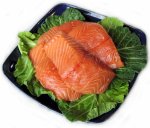
Healing Foods for Heart
Disease

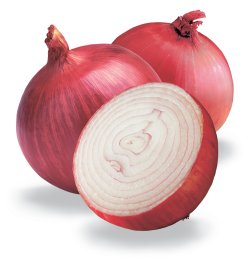
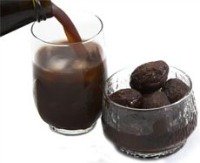

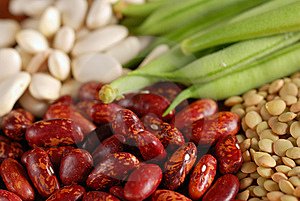


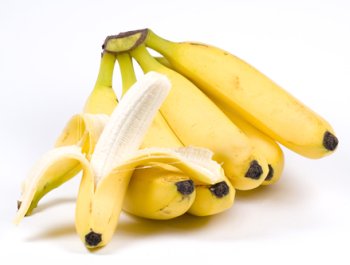
New! Comments
Have your say about what you just read! Leave me a comment in the box below.